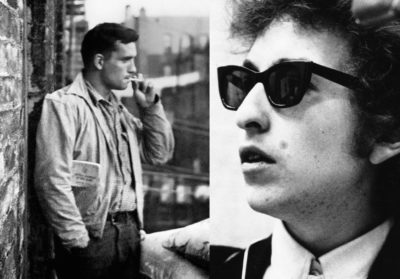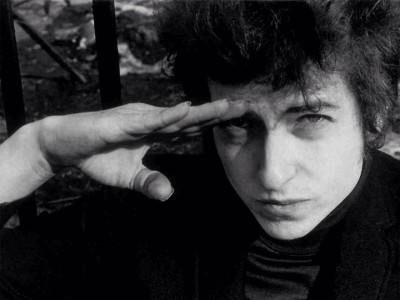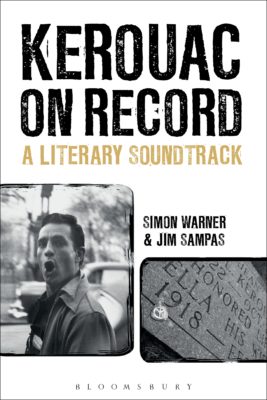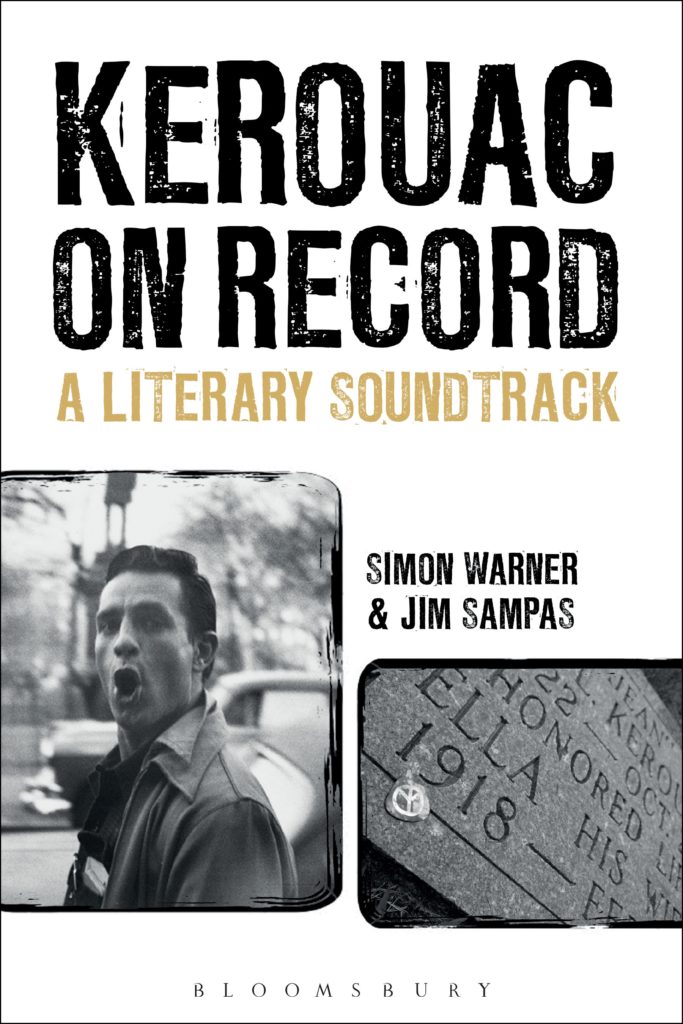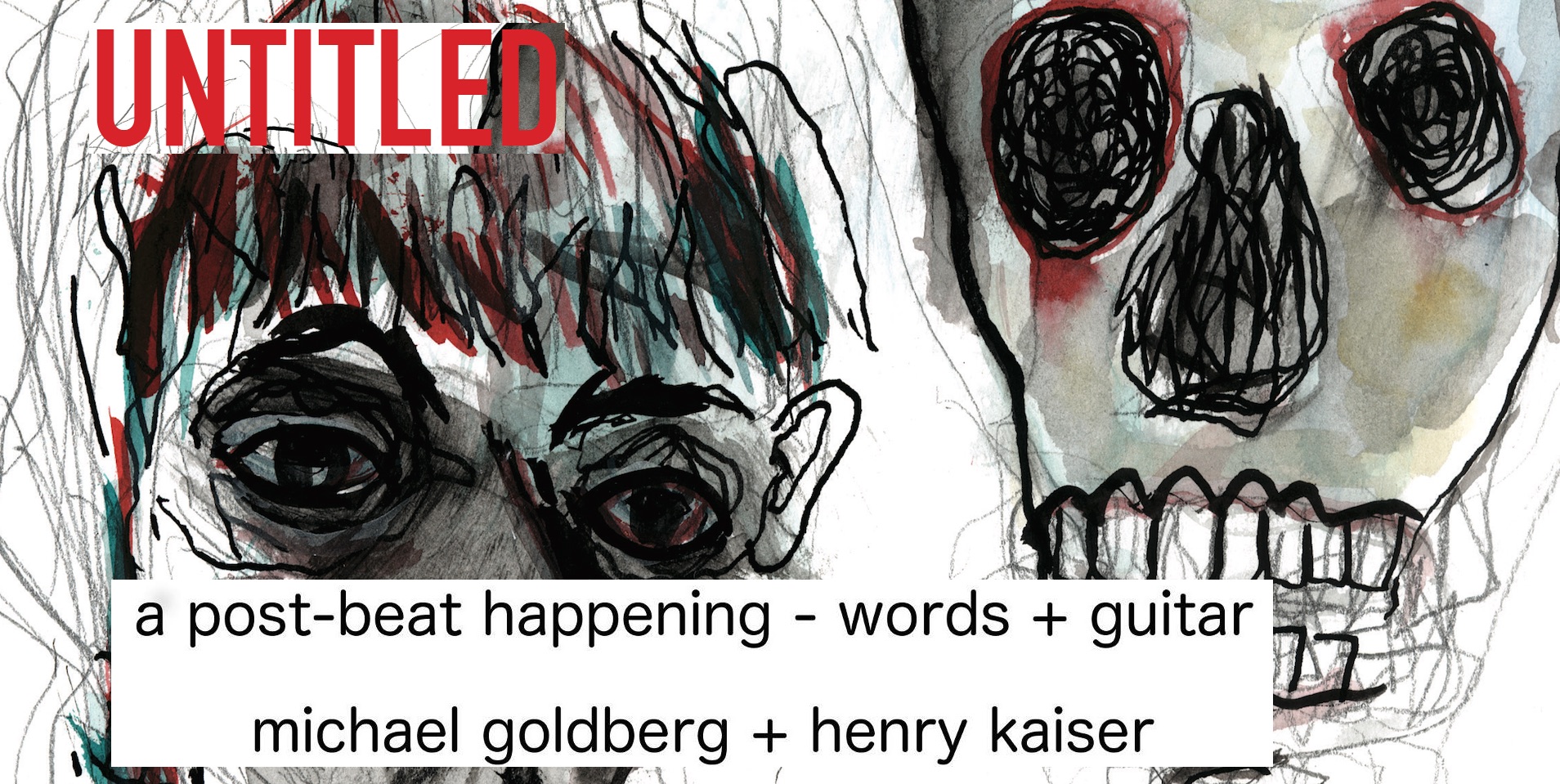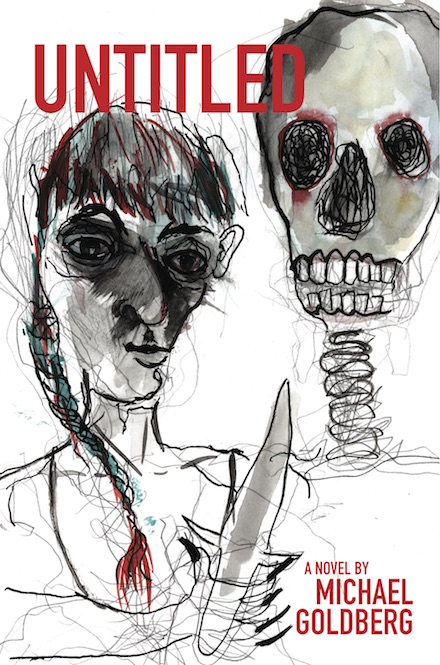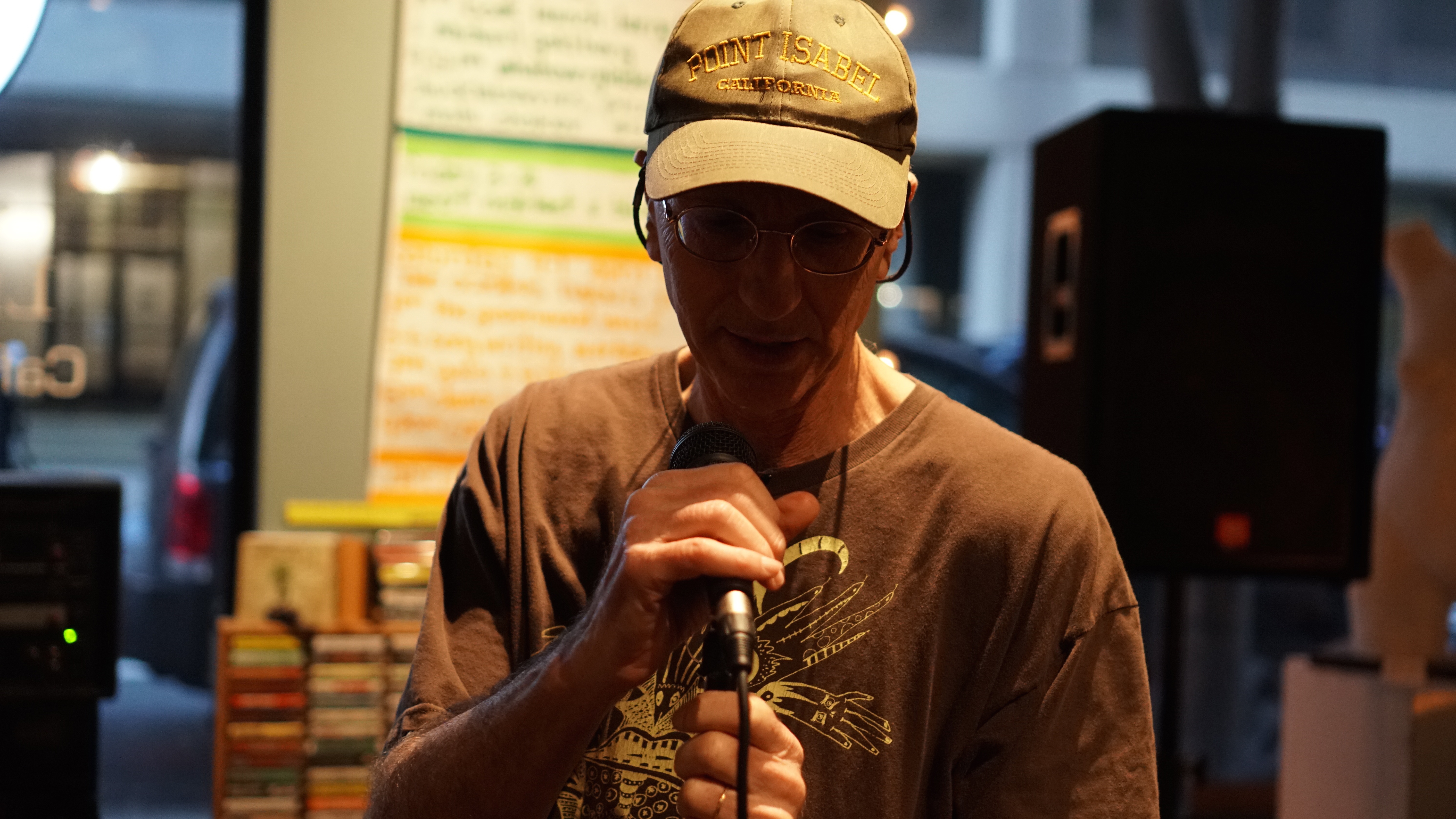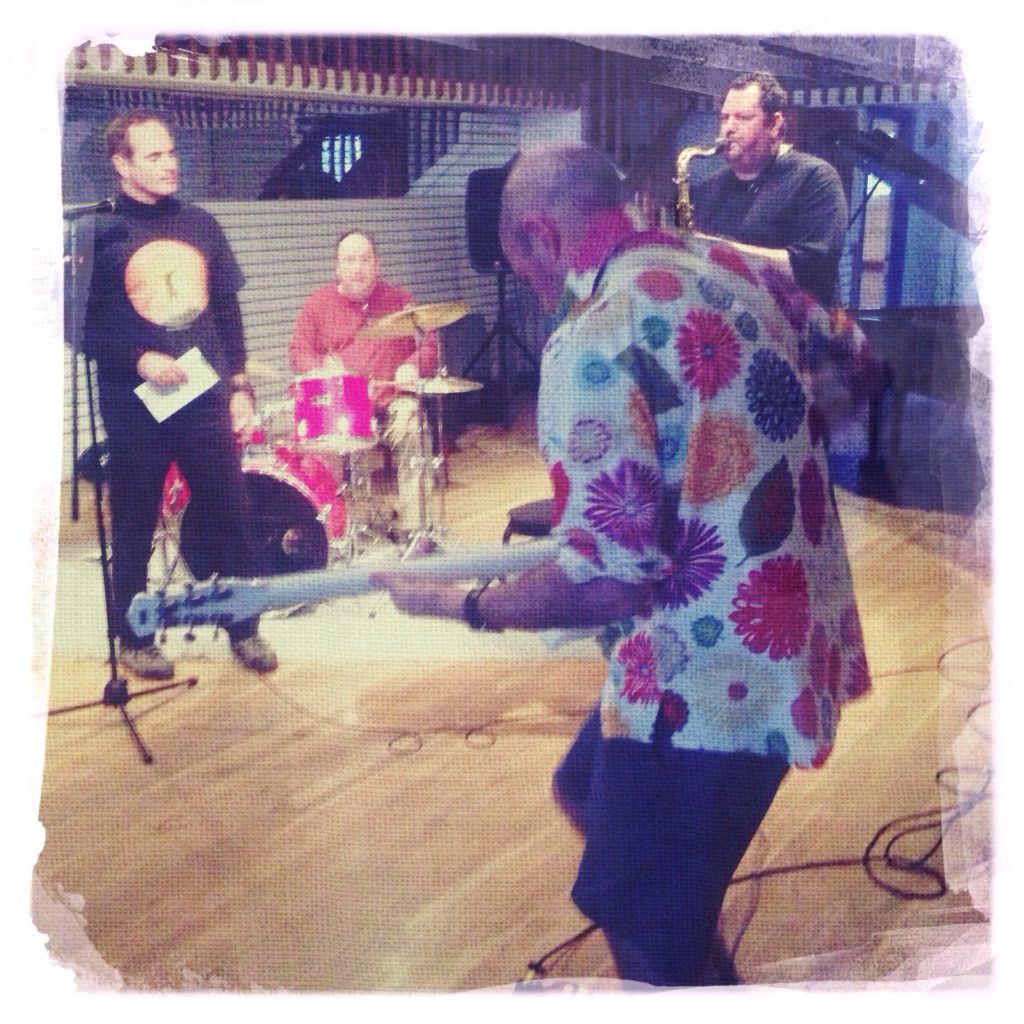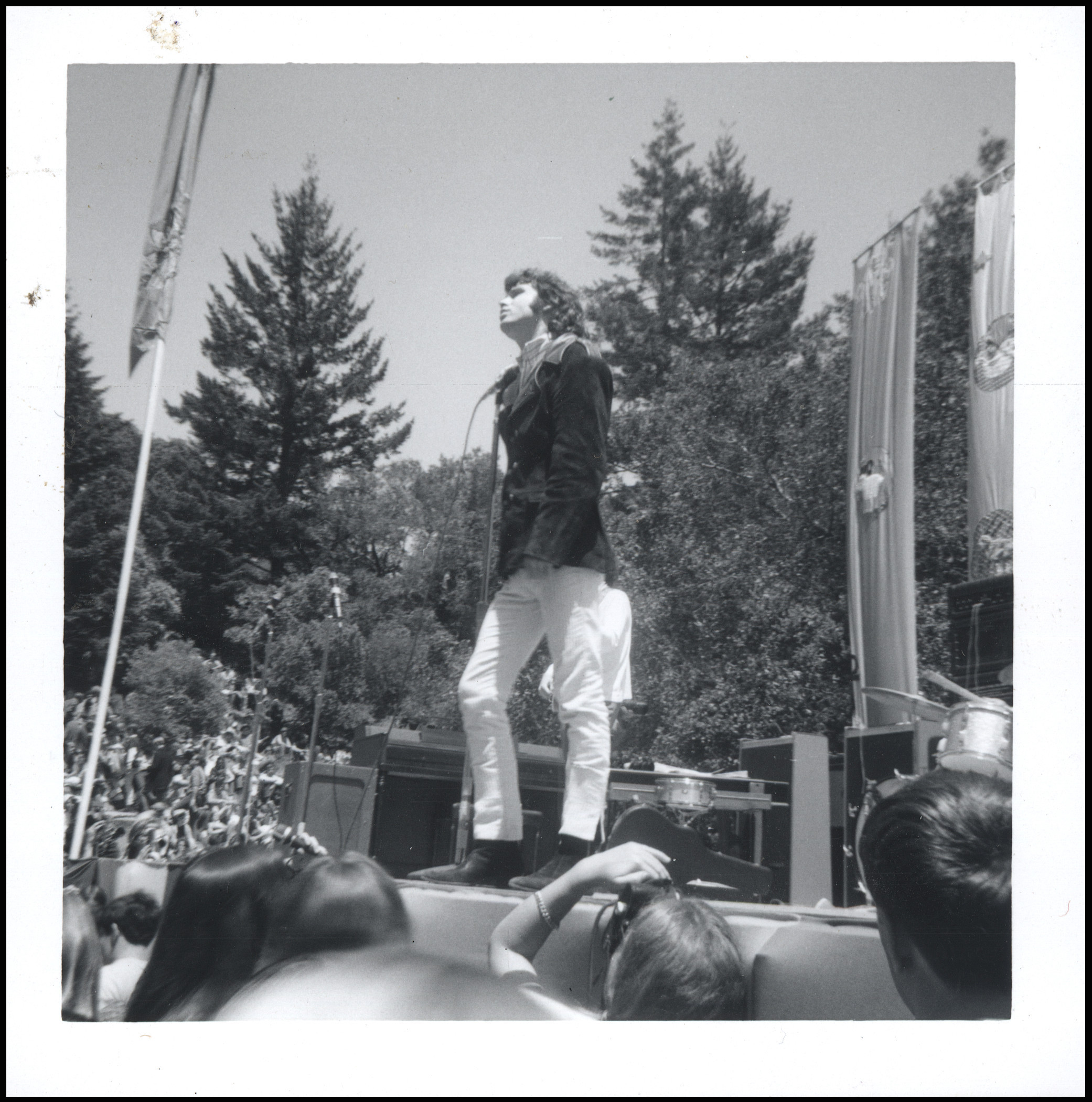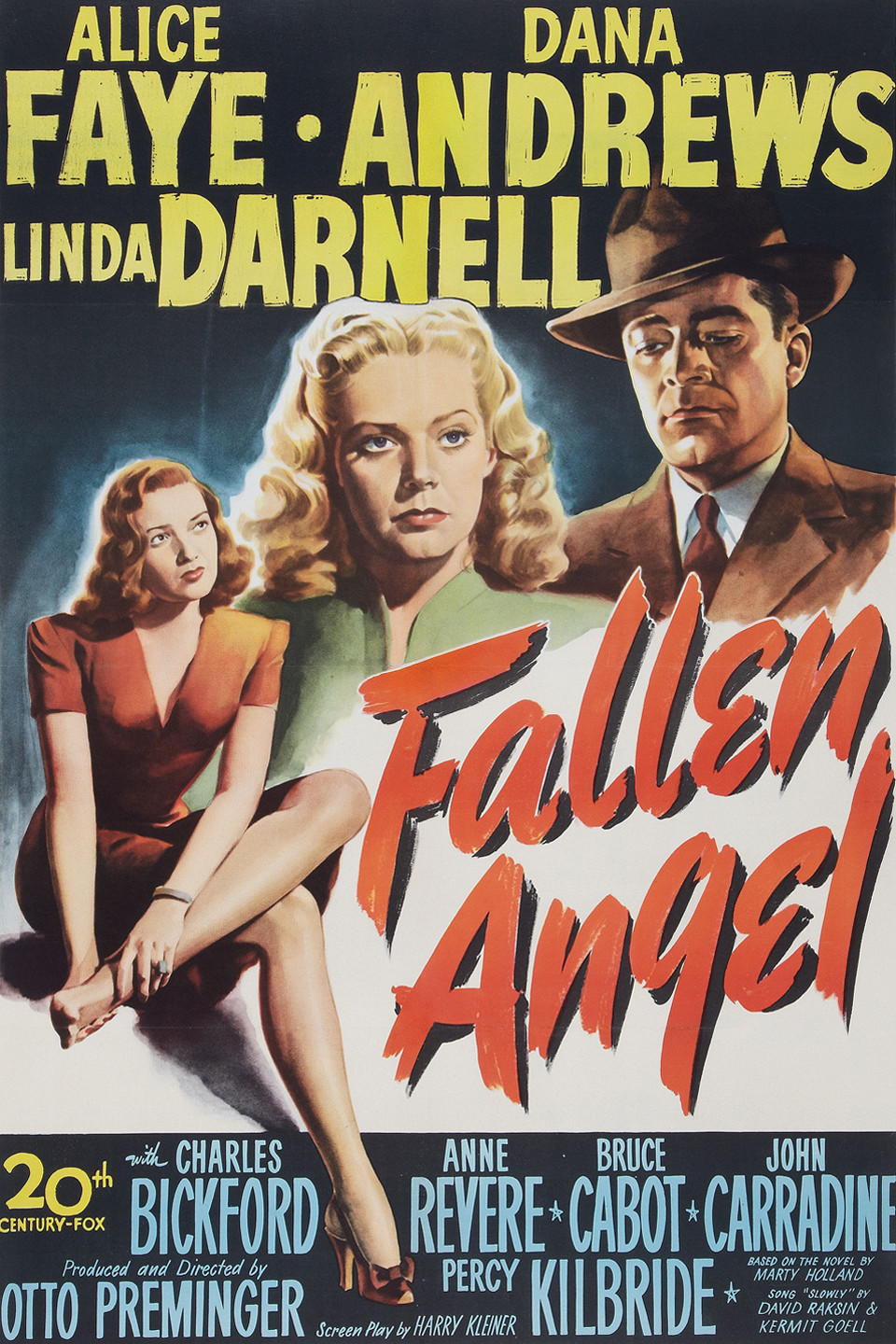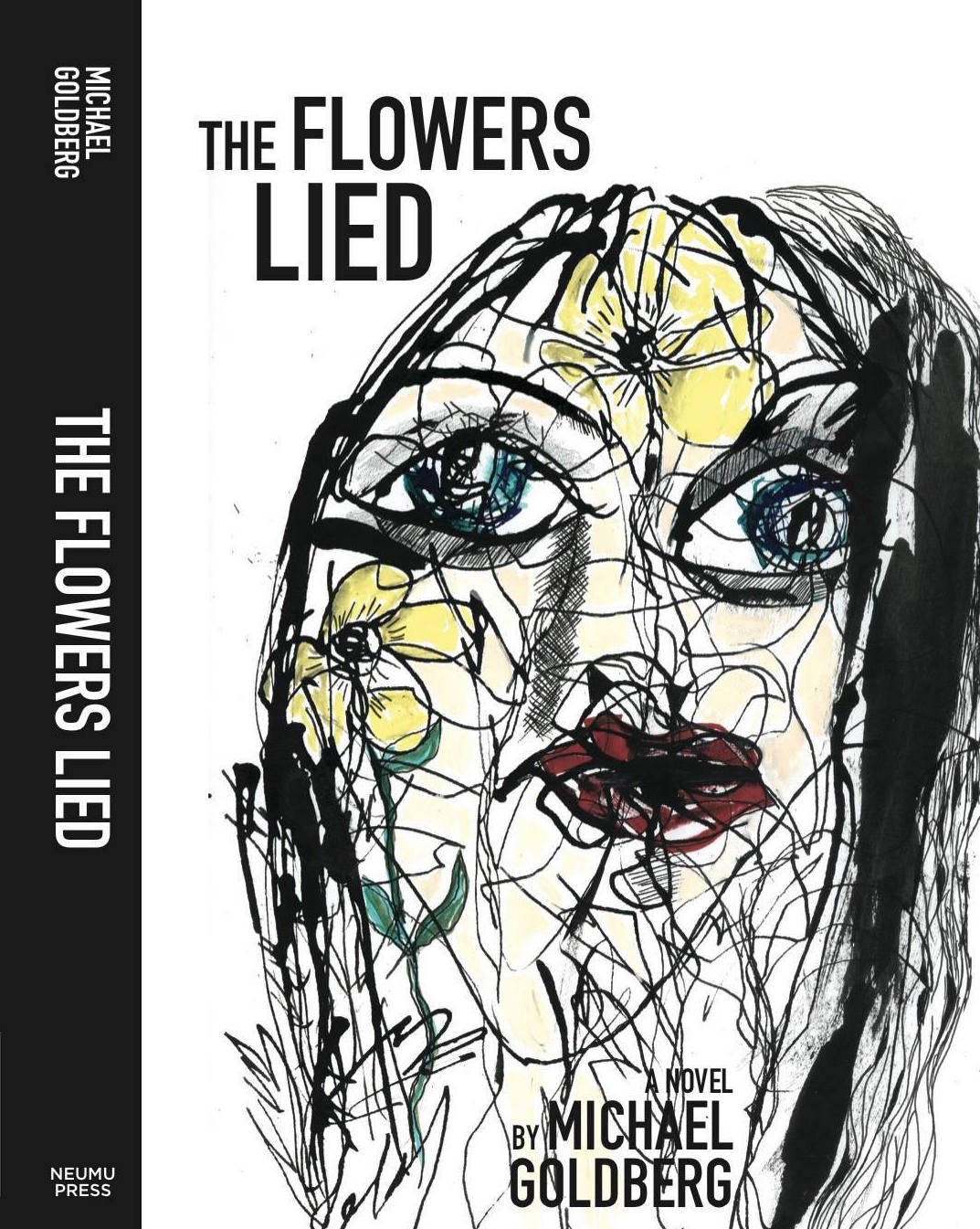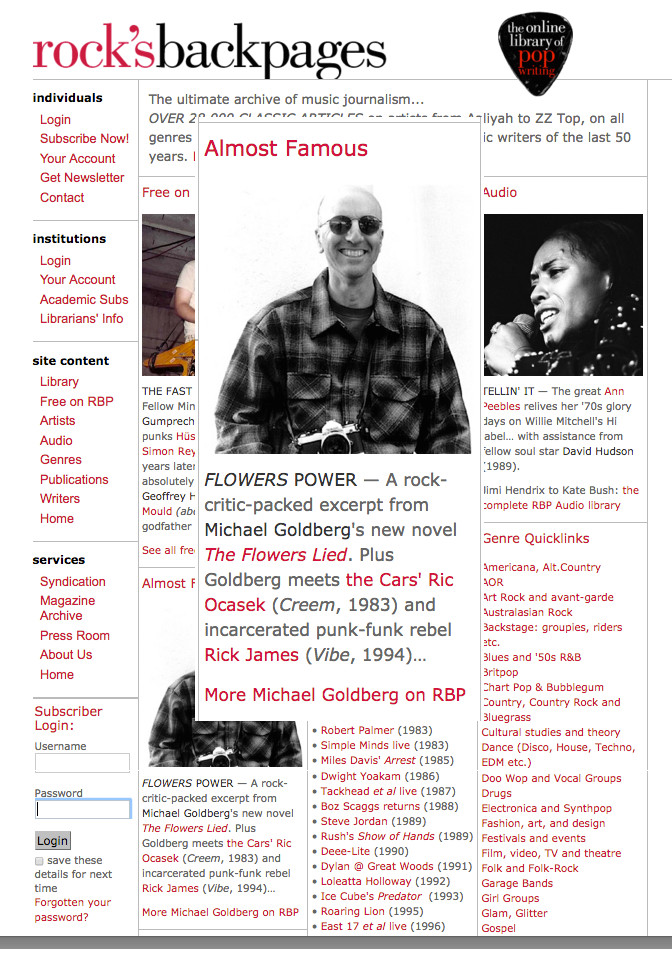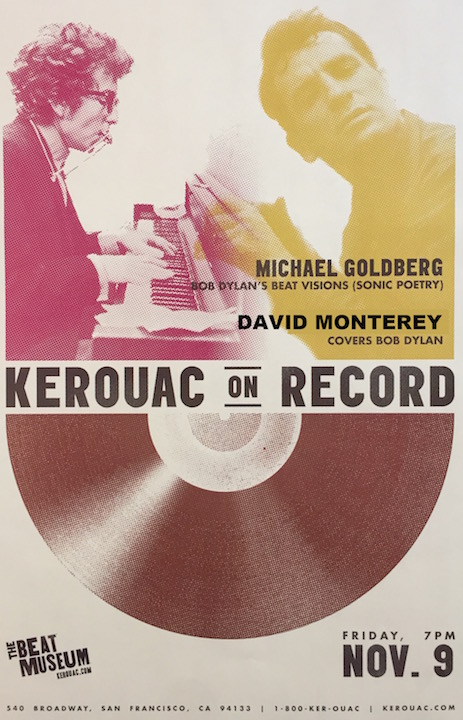
I got the call at 5:03, two hours before the event I was doing with singer/guitarist Johnny Harper was to begin. I was in my car, had just gotten on the freeway, and was heading to San Francisco.
Johnny was sick; he wasn’t going to make it.
The plan had been for me to read excerpts from my essay, “Bob Dylan’s Beat Visions,” and interspersed between those excerpts, Johnny would perform relevant Dylan Songs including “It’s Alright Ma (I’m Only Bleeding)” and “Visions of Johanna.” My essay was recently published in the book “Kerouac On Record” (Bloomsbury). In it I delve into just how much the Beat Generation writers including Jack Kerouac influenced Dylan’s 1960’s songwriting. (A lot!) The show was divided into two sets, each lasting about 45 minutes. Key to making it work were Johnny’s musical performances — it’s one thing to read for, say, 20 minutes, but if you plan to read for 45 minutes, you better have some great music to break it up. But Johnny was sick. Those musical performances weren’t going to happen.
So what was I going to do?
First thought: We’ll just have to cancel. Second thought: But no, people are already on their way to The Beat Museum on Broadway. It would be a lot of people. Johnny and I had been on KPFA previewing the show. I’d promoted it on Facebook and blogged about. The Dylan news site, Expecting Rain, had included it in their Thursday night news.
And then it hit me. My longtime friend, singer/songwriter/guitarist David Monterey, was planning to attend. It was long shot but maybe Dave would bring his guitar and play some of the key Dylan songs.
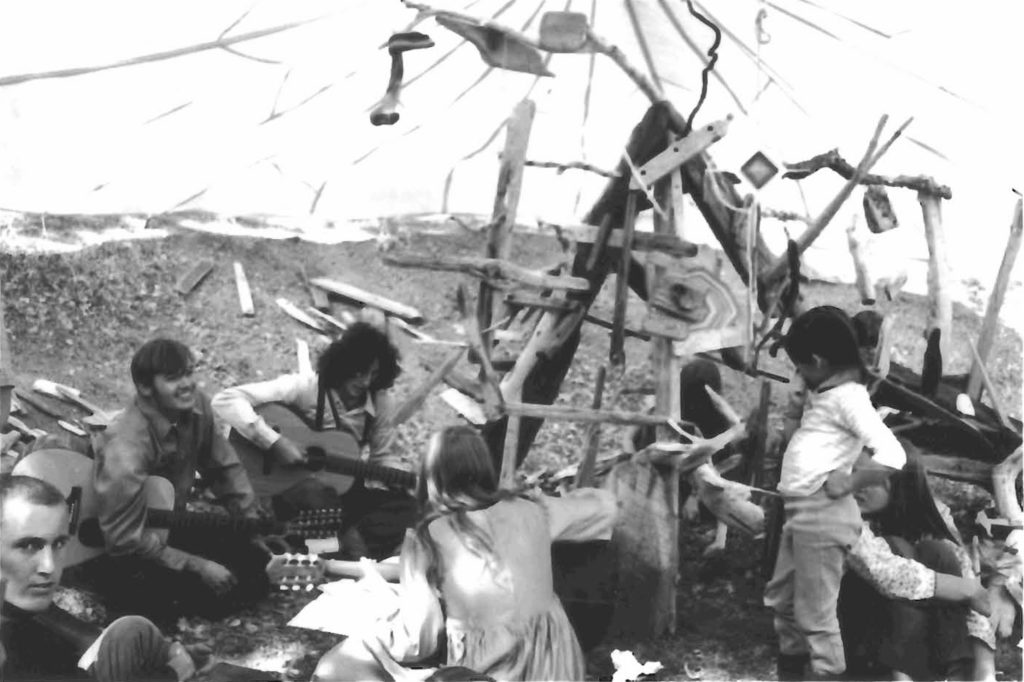
David Monterey with guitar (left) and Michael Goldberg with guitar (right) out at the beach in West Marin in the late Sixties.
Dave and I have been friends since elementary school. As I recall, he turned me on to Lawrence Ferlinghetti’s A Coney Island of the Mind. As teenagers we used to play Dylan songs on our guitars. Dave is as much a Dylan fan as I am (and as you likely know, I am obsessed with Dylan). Dave is a great singer and songwriter, and he currently leads the excellent Bay Area Americana band, the String Rays; he’s released numerous albums (both group and solo) and he’s a total pro. If anyone was going to fill in singing Dylan on less than two hours notice, it would be Dave.
I pulled off at the Gilman exit, parked by the side of the road, and got Dave on the phone. He hadn’t left the house yet. Whew! After a few seconds of silence, after he digested my request, he asked me which songs. Cool. He was in!
The Beat Museum is an incredible place. The ground floor has a huge book store (I bought a copy of the late Tom Clark’s Kerouac bio), as well as used vinyl for sale and many cool posters. Throughout the place are Beat items for viewing only including various first editions of classic Beat books, and one of Allen Ginsberg’s typewriters. The museum is located close to City Lights, Ferlinghetti’s legendary bookstore and not far from that classic Beat hangout, Caffe Trieste.
The performance space and the main museum area is upstairs, and up there it was cool to see, in a glass case, a plaid jacket that Jack Kerouac used to wear.
As it got close to 7 pm, folks started arriving — soon nearly every seat was filled.
The show itself was a blast. I began by quoting a comment Ferlinghetti had made to me in February of 2017: “He [Dylan] was a poet first. He wanted to be a published poet. But luckily he had a guitar and he knew how to make it into music. His early songs in the 1960s were long surrealist poems.”
And then a quote from Dylan’s friend and road manager, Bob Neuwirth: “Remember, Bob Dylan’s a poet, man. So when he writes, it’s a poet writing, and when he talks, it’s a poet talking.”
Right away I could tell the audience was into it, and things flowed smoothly from there.
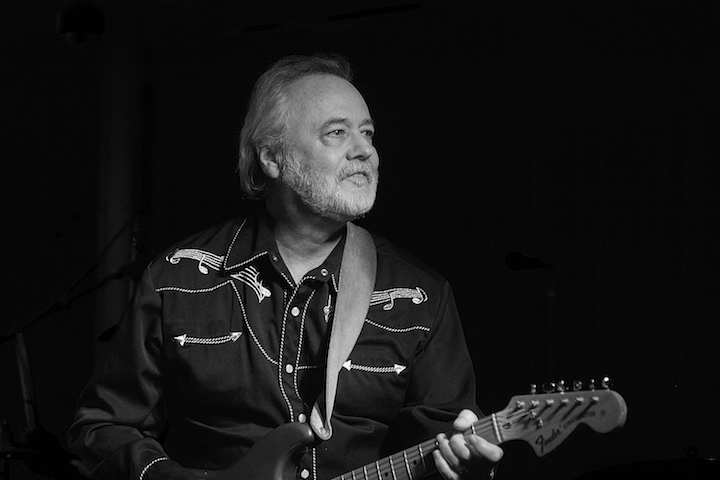
David Monterey at a gig earlier this year. Photo by Michael Goldberg
When I got to the part about Peter, Paul and Mary scoring a hit with Dylan’s “Blowin’ in the Wind,” I asked Dave if he’d play the song for us. He stood, strapped on his guitar and played an achingly beautiful version of the song. I’ve heard “Blowin’ in the Wind” countless times over the past 50-plus years. Yet hearing it in the intimacy of the Beat Museum performance space, it sounded brand new, and totally in tune with the horrific Trump years. These lines hit me hard:
“Yes, ’n’ how many years can some people exist
“Before they’re allowed to be free?
“Yes, ’n’ how many times can a man turn his head
“Pretending he just doesn’t see?”
Dave has a great voice. I hear a little John Prine sometimes, and Jesse Colin Young, perhaps some Jackson Browne and a little Paul McCartney. But really, Dave has his own unique voice. Sometimes there’s a slightly rough edge, other times it’s smooth as a billiard ball. There’s a passion in Dave’s voice, and compassion, but also a toughness. Dave is someone with true integrity. He was conscientious objector during the Vietnam War and he stands up for what he believes. Often he likes to quote the Elvis Costello line, “What’s so funny ’bout peace, love and understanding?”
During “Blowin’ in the Wind” (and all the others that Dave sang), some members of the audience just couldn’t help themselves and they quietly (and sometimes not so quietly) sang along.
When Dave finished “Blowin’ in the Wind,” he got a great round of applause.
By the end of the show, Dave had also sung a heartfelt “A Hard Rain’s A-Gonna Fall,” as well as potent renditions of “Chimes of Freedom,” “Desolation Row” and a concluding “Mr. Tambourine Man.”
Meanwhile, I read excerpts from “Bob Dylan’s Beat Visions” that probably added up to about one third of the essay.
The audience dug it, and I was invited back! Can’t beat that.
— A Days of the Crazy-Wild blog post —
